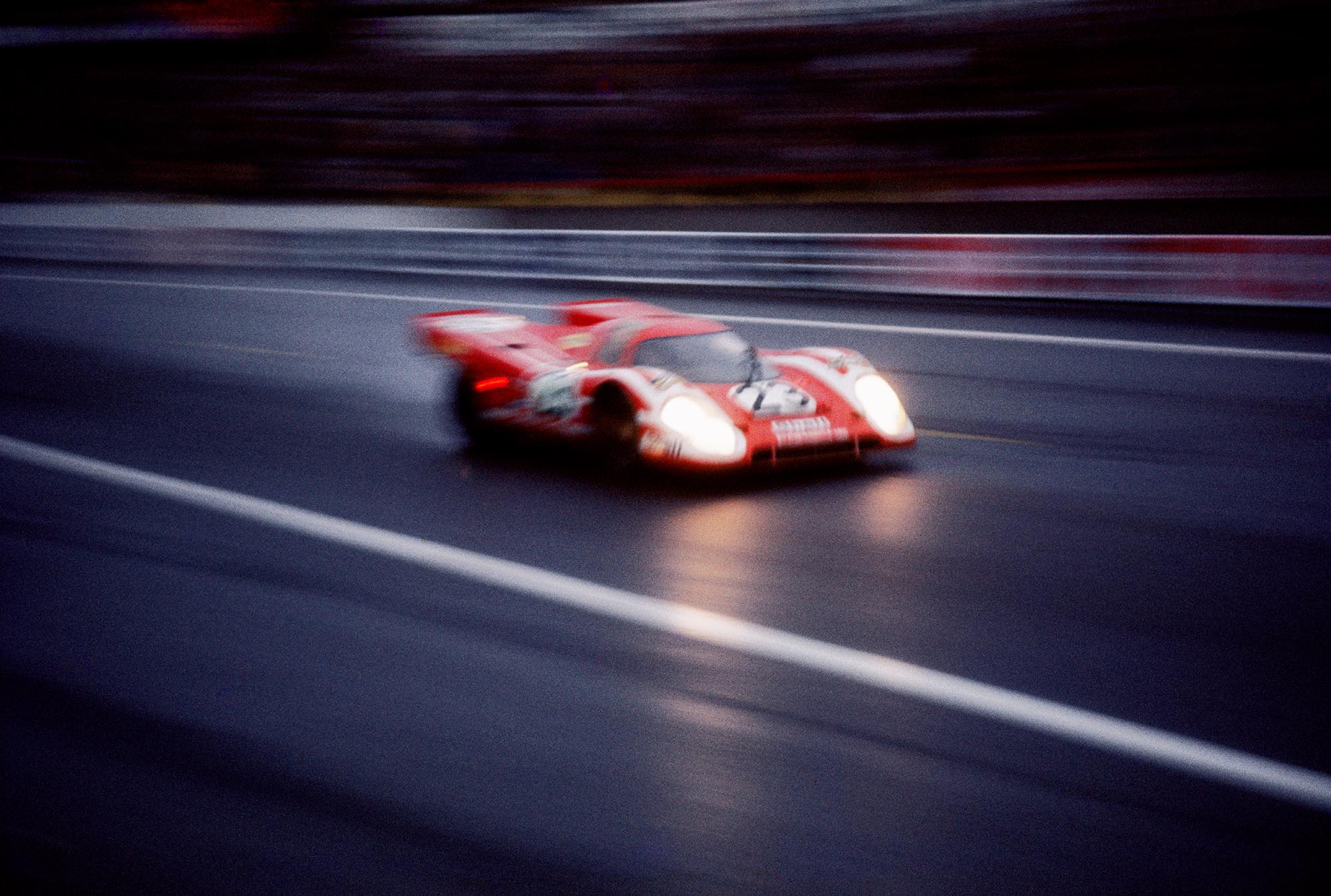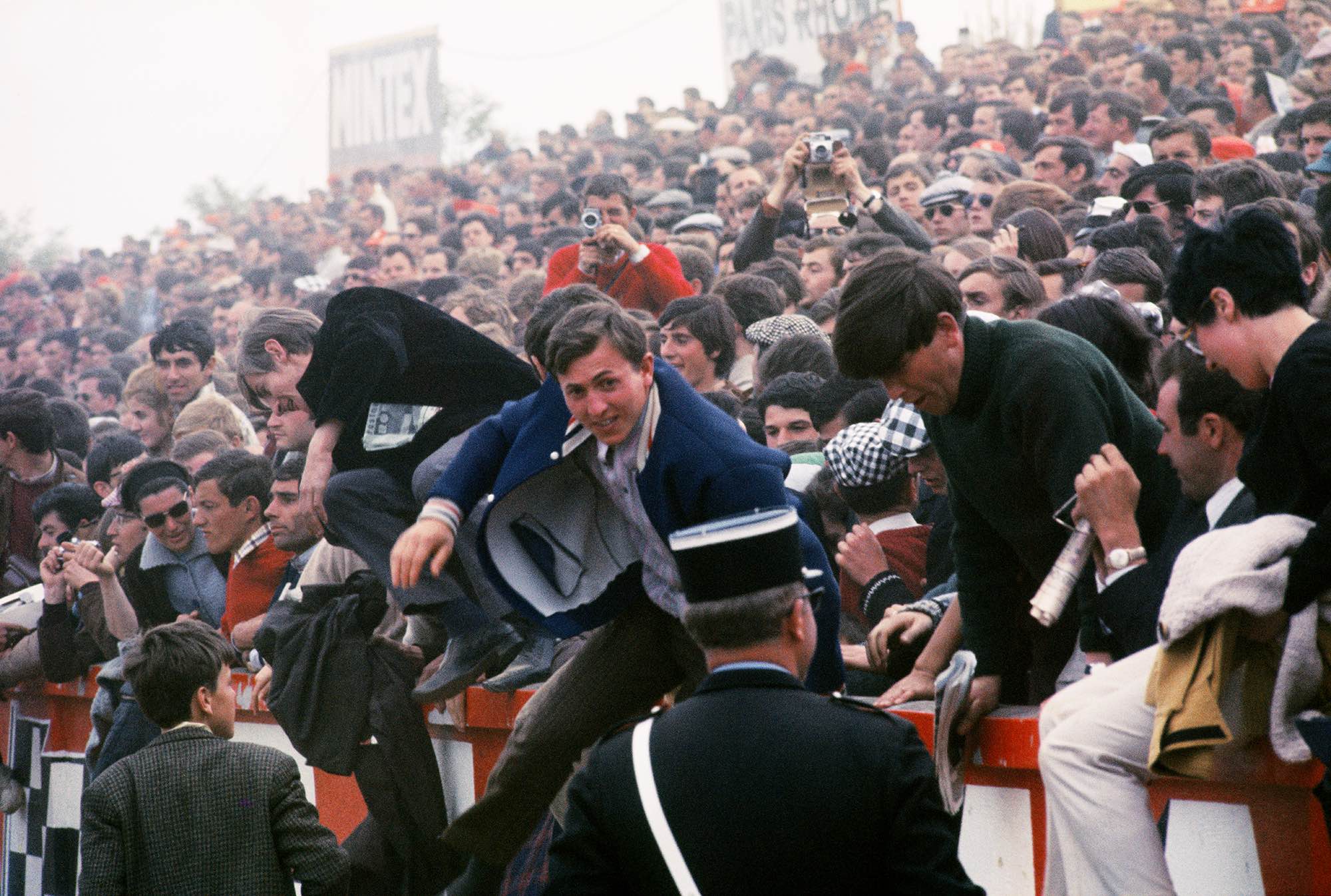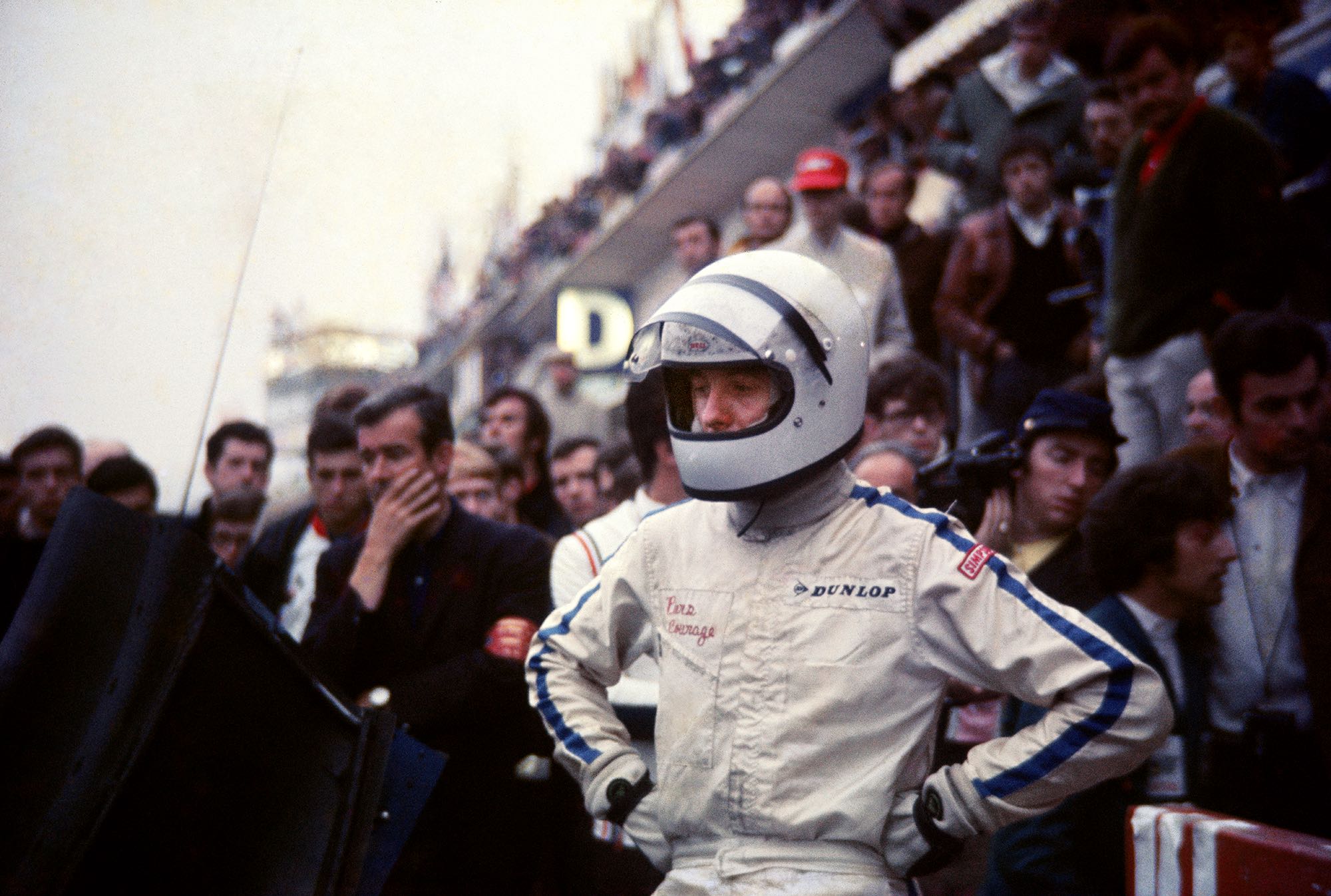The 100th running of the world-famous Le Mans 24-hour race, a grueling test of man and machine, recently finished with a fairytale victory for a returning Ferrari team after a 30-year absence. To coincide with the centenary celebrations of this historic race, exhibitions at the Fuji Motorsports Museum, Maison Franco-Japonaise and the Foreign Correspondents’ Club in Japan (FCCJ) have been put together, looking back at the ‘golden age’ of Le Mans as seen through the lens of Joe Honda, the first Japanese photographer to head over to Europe and cover some of motorsport’s biggest events.

Viewing his subjects with an artist’s eye, Joe Honda used blur effects to make his photographs appear like paintings. Here a Porsche 917 car melds with the night of the legendary 24-hour race. | All rights reserved © Joe Honda Archive/Le Mans Collection
The Name’s Honda, Joe Honda
Born Nobuyuki Jozuka in 1949, he took on the name “Joe Honda” thinking it sounded catchy and easier for foreigners to recall (the choice had nothing to do with the auto manufacturer and he has joked that he could have just as easily opted for “Joe Coca-Cola”). Having studied photography at Nihon University in Tokyo and trained under celebrity photographer Yuji Hayata after graduating, his interest in motorsport and photojournalism led to him covering Asia’s first exhibition IndyCar race in 1966 at Fuji Speedway. There, a chance encounter with the race winner, Scottish Formula 1 star Sir Jackie Stewart, fueled his interest in the global motorsport scene.
By that point, interest in motorcycles had grown in Japan. Honda Motor Company founder, Soichiro Honda, started his company as a motorcycle engine manufacturer, and Joe Honda himself would race around abandoned sites in Tokyo with his biker friends. Intrigued by the advancements in technology the Western racing scene had to offer, Honda then took his chance and set off on a European adventure that turned into an international career spanning almost five decades.
It shouldn’t be underestimated what a task heading over to Europe was at that time for a young Japanese person. Despite the success of the 1964 Tokyo Olympics, which made it easier to obtain visas, international travel was still not particularly speedy or as affordable as it is now. Setting out with $500, two cameras, a second-hand Toyota Corolla and very little English, he became widely recognized as the father of motorsports photography in Japan and helped fuel widespread interest in the sport in a country where previously it had been largely unknown.

In 1967, roughly 300,000 spectators thronged Le Mans to witness the Ferrari-Ford duel. Japanese photographer, Joe Honda, was among them to capture the drama unfolding and seize his role as a chronicler of history in the making. | All rights reserved © Joe Honda Archive/Le Mans Collection
Joe Honda and Le Mans
From an archive of more than 300,000, a small selection of photos taken at Le Mans in the late ’60s and early 1970s have been carefully curated by Maison Franco-Japonaise, Fuji Motorsports Museum, photo atelier Shashin Kosha and Honda’s daughter, Emi Honda, who has taken it upon herself to preserve her father’s collection.
The large-scale color prints on display help draw the viewer into the atmosphere of Le Mans, with Honda’s lens focusing not just on the track action, pit lane activity and the beauty of the machines, but also the culture and style of the people present and the fluctuating emotions of the crowd.
Honda took inspiration from a variety of disciplines, including graphic design, documentary photography and impressionist paintings such as those by Paul Cézanne. His eclectic style is clearly evident, from images that show his experimentation with slow shutter speeds and camera movements, using grainy film stock to capture stunning low-light color imagery evoking the work of lauded street photographers such as Saul Leiter, to tightly composed shots and beautiful sweeping landscape vistas.
He approached photography instinctively. His courageous character and early aspirations to be a war photographer serving him well, as there was danger not just for the participants but also for the maverick photographers of his day capturing the action. Lax safety regulations at that time allowed him to walk along the fringes of the race track to get shots that help bring the viewer closer to the action.
Even if you have little interest in motorsport, there is plenty to admire in his work and its historical context. As Inatomi explains; “Joe Honda’s images evoke the formidable power of the racing machine, the fervor of the crowd and the reality of Le Mans in that era. In short: the images transport us back in time, while reminding us of the enduring legacy of the race as it marks its centenary.”
The exhibition at Shizuoka’s Fuji Motorsports Museum runs until July 9 and the exhibition at The Foreign Correspondents’ Club of Japan runs between August 5 and September 1. Visit the Joe Honda website for more information.
Updated On June 26, 2023









